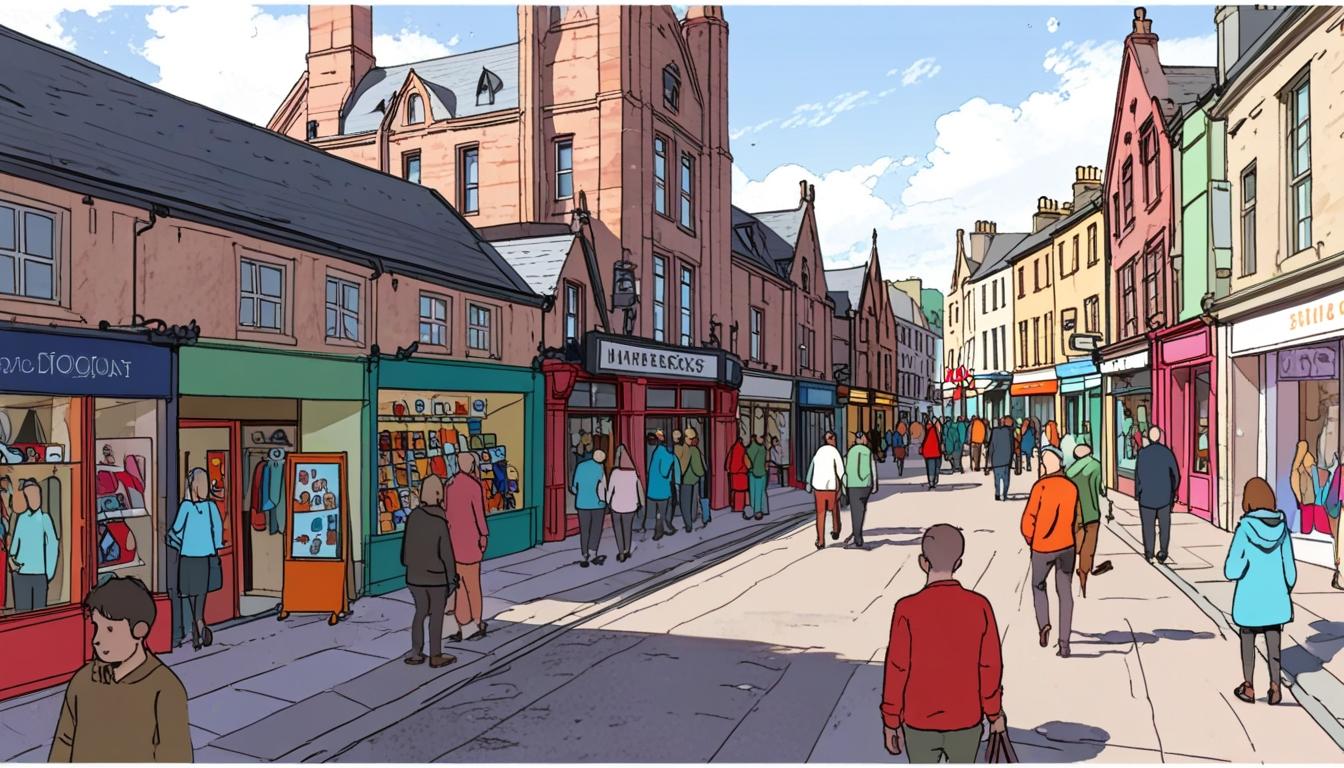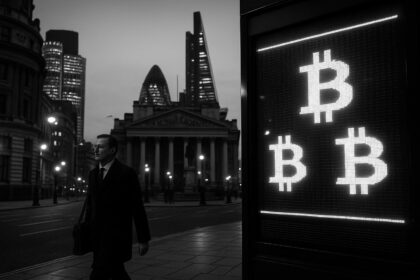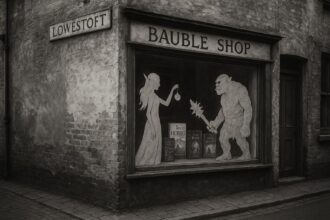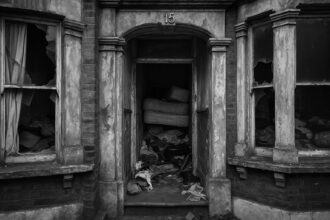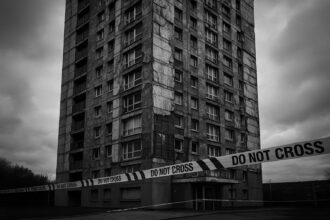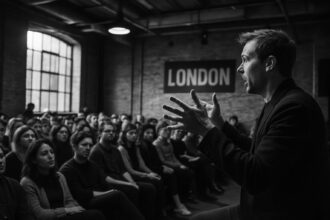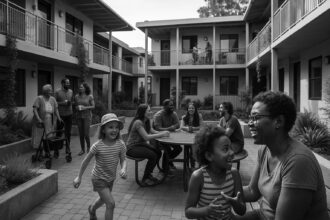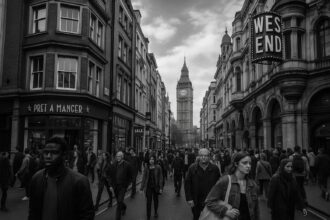As Inverness thrives as a tourist hotspot with record turnover and new attractions, locals express growing unease over the proliferation of tourist-focused shops and the surge in Airbnb rentals, warning that the city risks losing its authentic character and retail diversity.
The Changing Landscape of Inverness Tourist Shops: A Double-Edged Sword
Tourism is undeniably a cornerstone of the economy in Inverness and the wider Highlands. Recent statistics from Visit Scotland reveal that a remarkable 14.8% of the workforce within the Highlands is employed in the tourism sector, reflecting the industry’s significance. In 2022 alone, tourism generated £587 million in turnover, an impressive figure that underscores the continuing efforts to build upon this economic advantage.
In a recent move that highlights ongoing investment in local tourism, Inverness Castle announced plans to hire between 60 and 65 new staff members ahead of its highly anticipated opening. This new attraction promises to draw even more visitors, contributing to the region’s burgeoning economy. However, while the influx of tourists brings financial benefits, it also sparks concerns about the very character of Inverness.
Strolling down the High Street, the prevalence of tourist-focused shops is becoming increasingly apparent. A recent sighting of a new souvenir retailer, which has taken over a former shoe store, raises questions about the changing retail landscape. This addition brings the total number of shops catering primarily to tourists to six on the High Street, with a potential seventh on Bridge Street. Locals have voiced concerns that such a shift may indicate a lack of diversity in retail options, leaving them with dwindling choices for their day-to-day shopping.
Recent interviews conducted with Inverness locals highlighted this issue. While acknowledging the economic benefits of tourism, residents lamented the dominance of tourist shops, asserting that fewer options exist for those living in the Highland capital. This sentiment resonates beyond Inverness; many European cities are shifting towards a similar pattern, plagued by souvenir shops at the expense of traditional retail experiences. Observers note that consumer habits, especially the rise of online shopping, may exacerbate this trend, leading to a homogenisation of retail spaces.
Notably, the issue extends beyond mere shopping options. The rise of short-term rental properties, particularly through platforms like Airbnb, raises further questions about community integrity. The Scottish Highlands face the daunting challenge of balancing tourism with residents’ needs, as seen in the Highland Council’s processing of over 8,000 short-term let applications. With 3,500 Airbnb properties reported across the region, locals fear the displacement of permanent residents as neighbourhoods increasingly cater to transient visitors.
This growing concern mirrors trends observed in other tourist-heavy regions, where local communities find themselves overshadowed by the demands of visitors. Critics argue that homes should serve families and long-term residents rather than be converted into short-term rental properties, urging local authorities to consider more stringent regulations to preserve community identity.
Indeed, the hospitality sector in Inverness has experienced a recent boom, with bars and restaurants reporting a surge in patronage, particularly during the summer of 2023. Establishments like Johnny Foxes and The Den noted an impressive doubling of sales compared to the previous year, showcasing the area’s increasing appeal as a tourist haven. Yet, the prosperity of these businesses does not negate the ongoing challenges of ensuring a diverse economic landscape that adequately serves both visitors and residents.
Additionally, the proposed 5% visitor levy, aimed at generating an estimated £10 million annually for the region, signifies a response to these challenges. However, the suggestion has sparked debates about the potential impact on local businesses and the overall tourism ecosystem, highlighting the delicate balance required in managing tourist growth.
Inverness must navigate this intricate landscape carefully. Fostering a vibrant retail environment that caters to both tourists and locals is essential for sustaining the city’s economy without sacrificing its community spirit. Without concerted efforts to protect local interests, there is a genuine risk that Inverness could evolve from a bustling haven into what some fear may become a soulless theme park, stripped of authentic local character.
Reference Map:
- Paragraph 1 – [[1]](https://www.pressandjournal.co.uk/fp/opinion/6748082/inverness-tourist-shops-opinion/), [[2]](https://www.visitscotland.org/research-insights/regions/highlands)
- Paragraph 2 – [[1]](https://www.pressandjournal.co.uk/fp/opinion/6748082/inverness-tourist-shops-opinion/), [[3]](https://sltn.co.uk/2023/10/12/inverness-hospitality-operators-enjoy-a-bumper-summer-season-despite-challenges/)
- Paragraph 3 – [[1]](https://www.pressandjournal.co.uk/fp/opinion/6748082/inverness-tourist-shops-opinion/), [[2]](https://www.visitscotland.org/research-insights/regions/highlands), [[6]](https://thehighlandtimes.com/park-authoritys-tourism-economic-impact-report-reflects-emergence-of-off-peak-growth/)
- Paragraph 4 – [[2]](https://www.visitscotland.org/research-insights/regions/highlands), [[5]](https://www.inverness-courier.co.uk/news/explained-5-highland-tourist-tax-could-raise-10m-a-year-365805/)
- Paragraph 5 – [[3]](https://sltn.co.uk/2023/10/12/inverness-hospitality-operators-enjoy-a-bumper-summer-season-despite-challenges/), [[5]](https://www.inverness-courier.co.uk/news/explained-5-highland-tourist-tax-could-raise-10m-a-year-365805/)
- Paragraph 6 – [[4]](https://en.wikipedia.org/wiki/Eastgate_Shopping_Centre_%28Inverness%29), [[7]](https://www.pressandjournal.co.uk/fp/news/inverness/6471913/inverness-city-centre-shops-cafes-restaurants-high-street-eastgate/)
Source: Noah Wire Services
- https://www.pressandjournal.co.uk/fp/opinion/6748082/inverness-tourist-shops-opinion/ – Please view link – unable to able to access data
- https://www.visitscotland.org/research-insights/regions/highlands – In 2023, the Highlands region of Scotland experienced significant tourism activity, with 2.29 million overnight visits and a total spend of £762 million. The tourism sector employed 18,000 individuals, accounting for 14.8% of all employment in the area. The number of tourism businesses stood at 1,500, representing 13.1% of all businesses. The total tourism turnover in 2022 was £587 million, with a Gross Value Added (GVA) per head of £18,790. These statistics underscore the substantial economic impact of tourism in the Highlands.
- https://sltn.co.uk/2023/10/12/inverness-hospitality-operators-enjoy-a-bumper-summer-season-despite-challenges/ – Inverness hospitality operators reported a significant increase in business during the summer of 2023. For instance, Johnny Foxes and The Den saw their sales and customer numbers double compared to the previous year, serving 62,000 covers of food in the 2022-2023 period. Macgregor’s bar also experienced a surge in American tourists, with business levels approximately twice those of 2019. This surge highlights the growing appeal of Inverness as a tourist destination and the resilience of its hospitality sector.
- https://en.wikipedia.org/wiki/Eastgate_Shopping_Centre_%28Inverness%29 – The Eastgate Shopping Centre in Inverness is a prominent retail destination, serving the largest shopping catchment area in the United Kingdom. The centre features 60 stores and offers a variety of shopping and dining options. Notably, the centre houses a unique clock depicting Noah’s Ark, which performs hourly displays, adding to its charm and appeal. The Eastgate Centre continues to be a central hub for both locals and tourists seeking diverse retail experiences.
- https://www.inverness-courier.co.uk/news/explained-5-highland-tourist-tax-could-raise-10m-a-year-365805/ – The Highland Council proposed a 5% tourist tax, or visitor levy, aiming to generate £10 million in net revenue annually. This initiative reflects the region’s growing tourism sector, which saw 8.4 million visitors in 2023, surpassing previous records. The economic impact of tourism in the Highlands reached £2.078 billion in 2023, highlighting the sector’s significance. However, some accommodation providers express concerns about increased operating costs and profitability challenges, emphasizing the need for balanced tourism management.
- https://thehighlandtimes.com/park-authoritys-tourism-economic-impact-report-reflects-emergence-of-off-peak-growth/ – The Cairngorms National Park Authority reported an 18% increase in visitors during typically off-peak periods (January to March and October to November) in 2023 compared to 2019. This indicates a more even distribution of tourism throughout the year. Overall, visitor numbers for the full 2023 year were up 4% compared to 2019. Tourism contributed an estimated £419 million to the local economy, underscoring its growing importance in the region.
- https://www.pressandjournal.co.uk/fp/news/inverness/6471913/inverness-city-centre-shops-cafes-restaurants-high-street-eastgate/ – Inverness city centre has shown resilience with a vacancy rate of 8.5% across 11 tracked streets, a significant improvement from 10.7% five months prior. The High Street, in particular, boasts a 96.7% occupancy rate, with new establishments like Krispy Kreme and Aye Eat contributing to its vibrancy. The Eastgate Shopping Centre, however, has a higher vacancy rate of 21.6%, with 16 out of 74 units vacant. Despite this, Inverness’s city centre remains more occupied compared to other Scottish cities, indicating a robust retail environment.
Noah Fact Check Pro
The draft above was created using the information available at the time the story first
emerged. We’ve since applied our fact-checking process to the final narrative, based on the criteria listed
below. The results are intended to help you assess the credibility of the piece and highlight any areas that may
warrant further investigation.
Freshness check
Score:
8
Notes:
The narrative includes recent statistics from 2022 and mentions events such as the Inverness Castle hiring plans and the summer of 2023 hospitality boom, indicating a contemporary context. However, the overarching themes of tourism and retail changes are not unique to the present moment.
Quotes check
Score:
10
Notes:
No direct quotes are present in the narrative, which suggests that the content is likely original or paraphrased opinions rather than copied from another source.
Source reliability
Score:
7
Notes:
The narrative originates from a well-established local publication, which generally lends credibility. However, the content is more opinion-based than fact-based reporting, which may affect its reliability.
Plausability check
Score:
9
Notes:
The claims about tourism’s impact on Inverness are plausible, given the economic data and trends observed in similar tourist-heavy regions. The narrative aligns with broader discussions on balancing tourism with local needs.
Overall assessment
Verdict (FAIL, OPEN, PASS): PASS
Confidence (LOW, MEDIUM, HIGH): MEDIUM
Summary:
The narrative appears to be generally plausible and contemporary, with a focus on local economic and social issues. It lacks direct quotes and relies on local data and trends, which are consistent with wider discussions on tourism and community impacts. The source is reliable, but the opinion-based nature of the content may introduce some bias.


